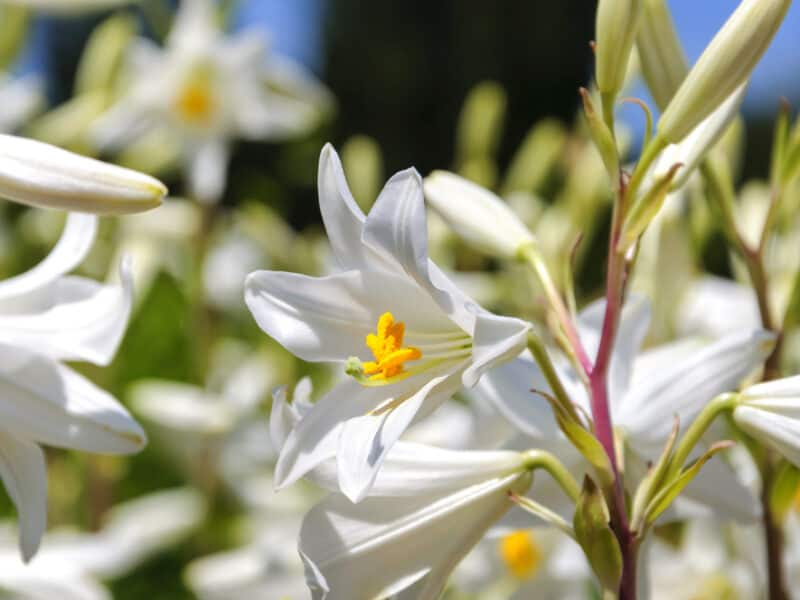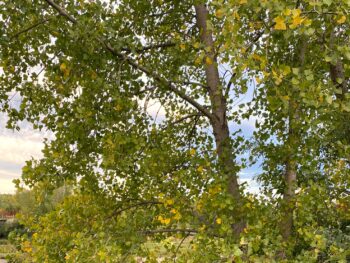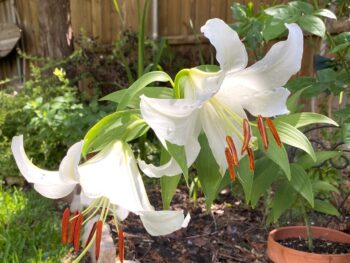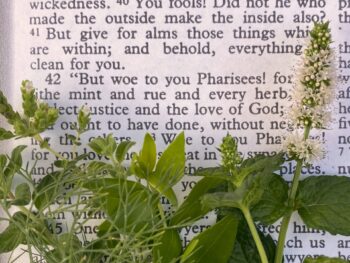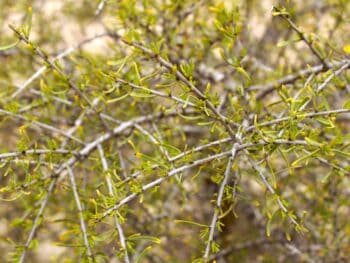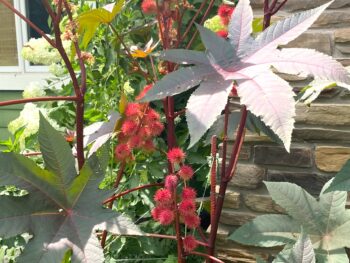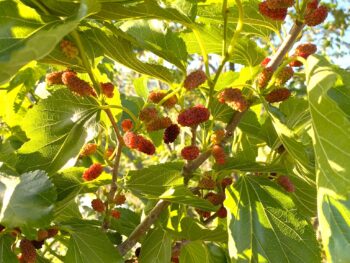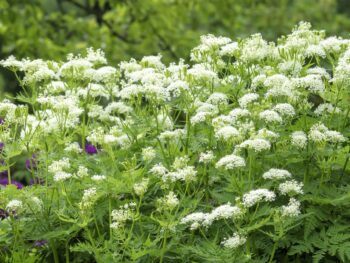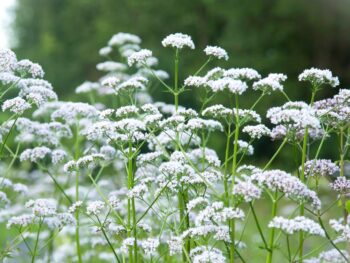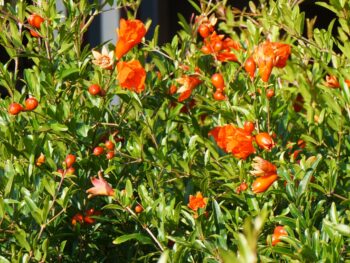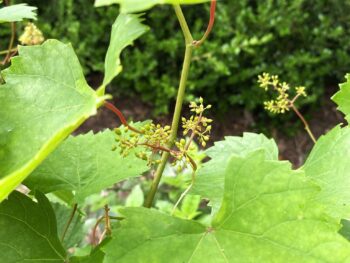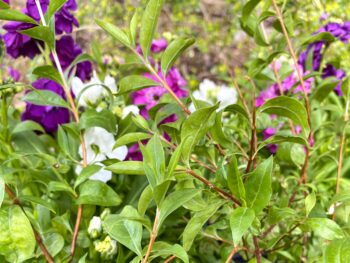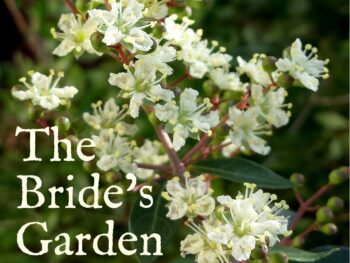Gardeners, are you ready to decorate your garden with showy, scent-sational blooms? Browsing among the lilies, a poetic phrase expressed in a handful of Bible translations, bestows a special landscape detail and another aromatic layer of loveliness to The Bride’s Garden. It is a repeating gesture in Song of Songs, bringing together several concepts to nibble on, enriching and endearing the bride and Bridegroom relationship.
My beloved is mine and I am his; he browses among the lilies. Song of Songs 2:16 NIV
My beloved has gone down to his garden, to the beds of spices, to browse in the gardens and to gather lilies. I am my beloved’s and my beloved is mine; he browses among the lilies. Song of Songs 6:2-3 NIV
What is the Lord revealing in this melodic garden Word? Let’s dig in! And then, of course, we’ll plant!
Browsing among the Lilies
Two keywords make up this tagline of Scripture. The first, browse, comes from the Hebrew word ra’a, a word ascribed to shepherds and their foraging flocks. In its nuances, ra’a encompasses the nurture and feeding of flocks, their grazing and pasturing, also incorporating the devoted care of the shepherd to see to it that his sheep are fed. The shepherd’s life is integrated with his flock; he closely associates with them and watches over them. He is their companion, and in the sense of protection and help, their friend. The beloved has already told us that her lover keeps flocks, noticing at once his capacity of tender care:
Tell me, O you whom my heart loves, where do you pasture your sheep? Where do you rest your sheep during the midday heat? Tell me lest I wander around beside the flocks of your companions! Song of Songs 1:7 NET
Most translations reflect this identity in their version of verses 2:16 and 6:3:
I am his, and he is mine, as he feeds his sheep among the lilies. Song of Songs 6:3 CEV
This depth of meaning offers a grazing rhythm, a pastoral pace, a gentle, fluid move of nourishment and rest, a serene, lingering presence in meadow or grassland, as a lyrical dimension to the lovers’ life.
Secondly, lilies. The Hebrew word translated as lily, susan or shuwshan, is generic in a botanist’s sense, not pinpointing a species but overall referring to lily-like flowers, most likely flowers growing from bulbs or corms. Happily so, however; shuwshan comes from the root word “to exult, rejoice, display joy.” O the joy that flowers bring! Many scholars assign shuwshan to the taller blooming true lilies, as opposed to lower growing flowers of the field, inferring from Biblical context clues flowers found in more pocketed places near woodlands or hillsides.
I am only a wild flower in Sharon, a lily in a mountain valley. Song of Songs 2:1 GNT
Israel will blossom like a lily, growing roots like the cedars of Lebanon. Hosea 14:5 ISV
The lover browsing among the lilies pictures a shepherd who grazes his flocks up the hillsides into the thickets and woodlands, escaping the unrelenting sun of the lowlands. Flocks would enjoy intermittent shade and dappled canopies overhead as they graze through ample forage. The metaphor speaks to refreshment, maybe catching canyon breezes filled with pleasing scents, nudging upwards through aromatic lilies and balsam-yielding shrubs of the Holy Land terrain.
Planting Lilies in The Bride’s Garden
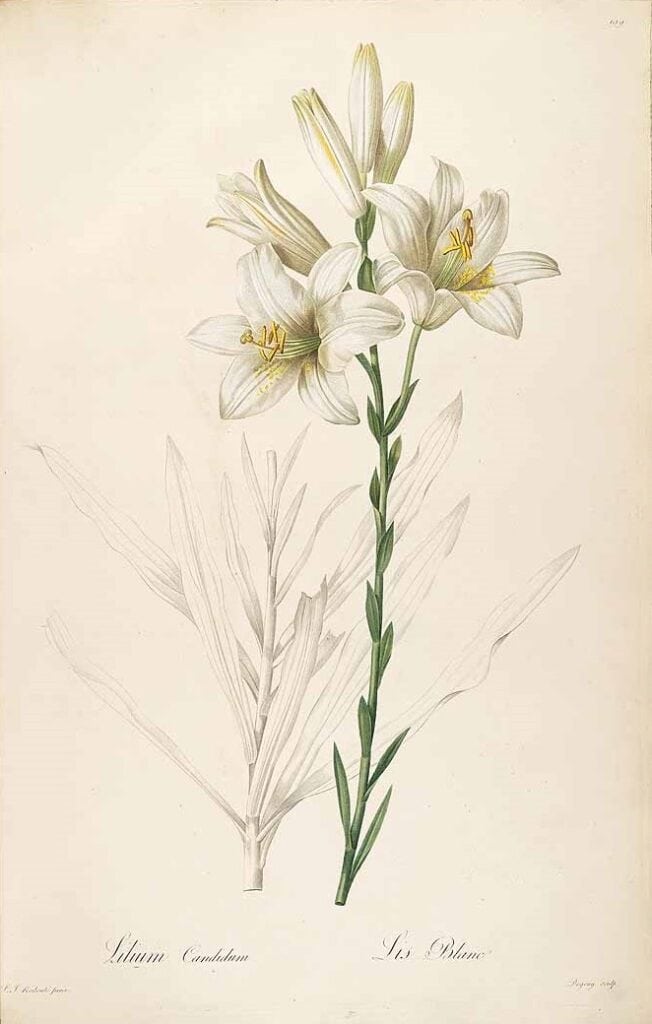
Madonna lily, Lilium candidum, is the favored species to fit this description, with its bright white, trumpet-formed flowers standing out against the deeper greens of shadowy mountain thickets. Its exultant, straight-growing stature, about 2 to 3 feet tall, adds a special layer of interest in the garden between low growing shrubs and blooms and background hedges and trees. Their sweet, floral scent is a joy to discover, adding to fragrances celebrated in Song of Songs. Plant lily bulbs now for summer-to-early fall blooming.
Find more information on Madonna Lily in the Plant Guide
All White or Bursts of Color?
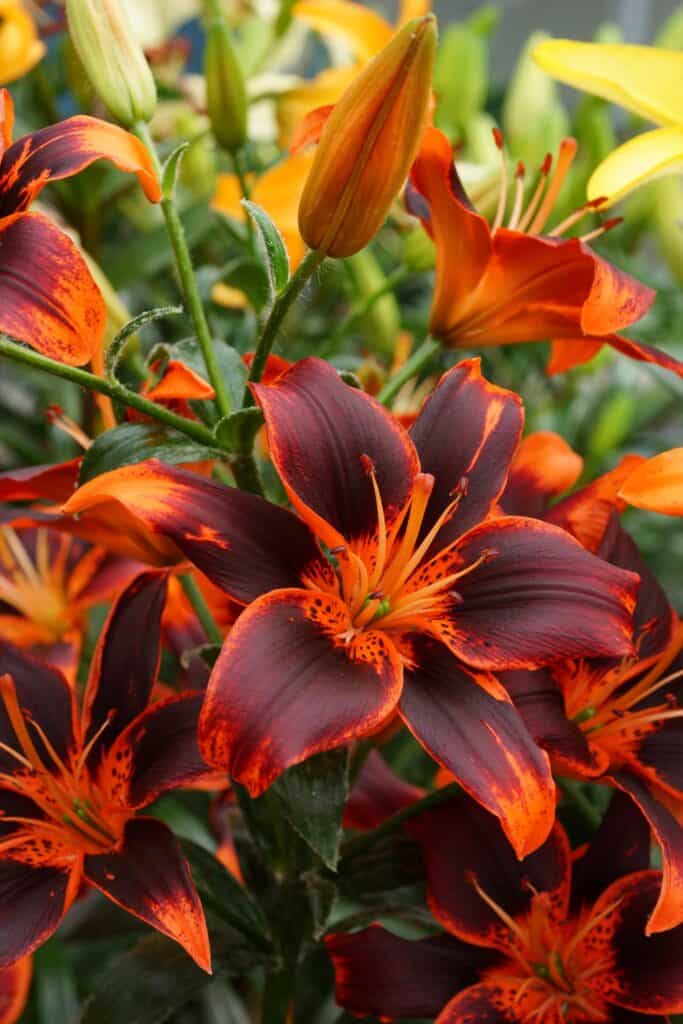
Do you envision your Bride’s Garden with all white flowers or bursts of color? I was all set to plant all white until I learned that henna blossoms can be white or bright pink…then the stock I found as their early spring stand-in came in irresistible “hot cakes” colors (see Blossoming Henna in The Bride’s Garden). Likewise, Lilium candidum are famously white, a symbol of purity and devotion like a wedding dress. Yet a small detail in Song of Songs introduces more color:
His cheeks are like beds of spices pouring forth fragrant scents. His lips are like lilies, distilling choice myrrh. Song of Songs 5:13 NCB
Comparing his lips to lilies would imply reddish or orangy, flesh-toned colors for the flowers, and Lilium chadcedonicum was a rare yet native lily to the Mediterranean with scarlet to vermillion coloring. Consider this permission to add colorful lilies to the mix!
The Year of the Lily
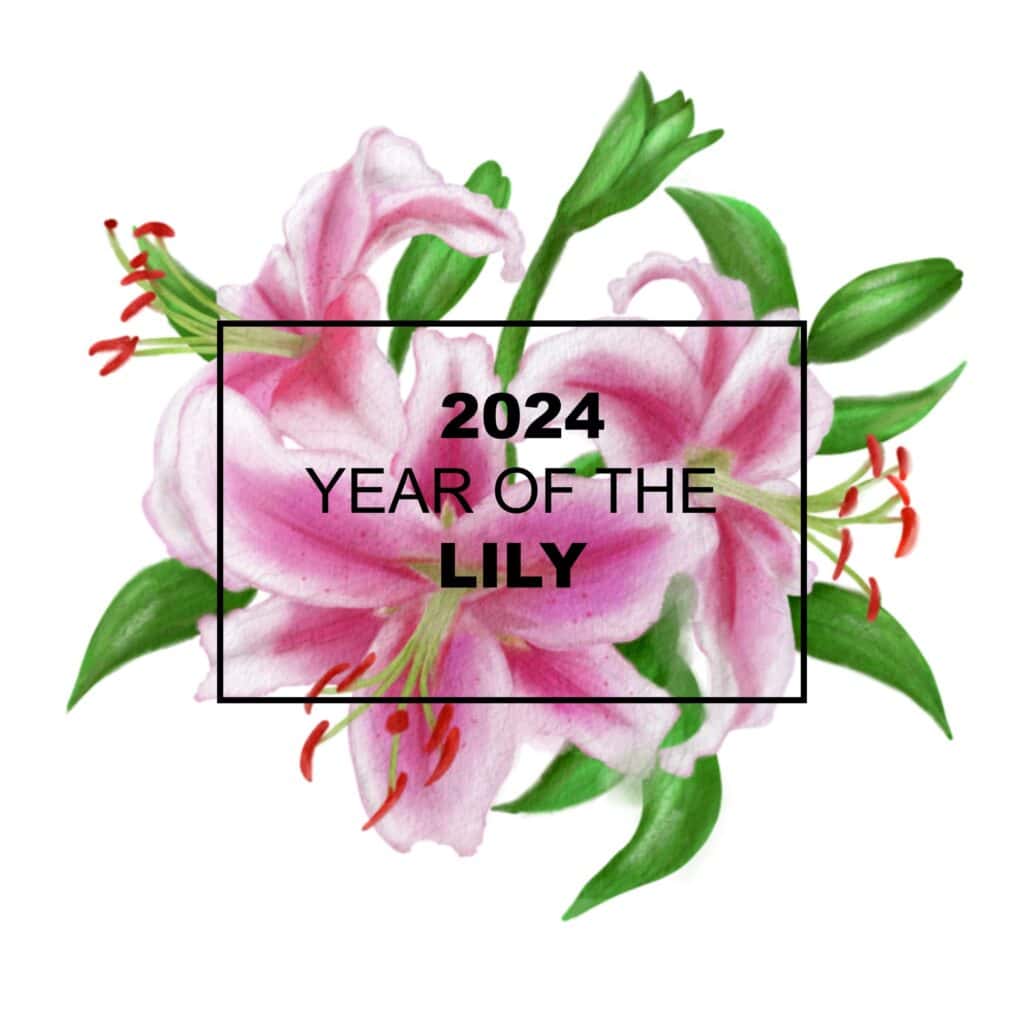
We are blessed to have much guidance and information from the National Garden Bureau when it comes to selecting and planting lilies, because 2024 is the Year of the Lily! This annual program at NGB inspires gardeners to learn about a variety of plants and add something new to their garden each year. Find information on the basic types of lilies, a complete growing guide, and sources to buy lily bulbs from NGB member-vendors.
Click here for National Garden Bureau’s Year of the Lily planting guide and much more
Shepherd’s Rhythm and Lily Joy
The following Scriptures repeat themes of ra’a and sus to remind us of the countenance of our Lord Jesus, Bridegroom and Good Shepherd. Read and enter into the shepherd’s rhythm and lily-joy.
The Lord is my Shepherd [to feed, to guide and to shield me], I shall not want. Psalm 23:1 AMP
Yahweh is my best friend and my shepherd. I always have more than enough. He offers a resting place for me in his luxurious love. His tracks take me to ab oasis of peace near the quiet brook of bliss. That’s where he restores and revives my life. Psalm 23:1-3 TPT
The sun lives in the heavens where God placed it and moves out across the skies as radiant as a bridegroom going to his wedding, or as joyous as an athlete looking forward to a race! Psalm 19:4-5 TLB
He takes care of his flock like a shepherd. He gathers the lambs in his arms. He carries them close to his heart. He gently leads those that have little ones. Isaiah 40:11 NIRV
The land that was desolate and impassable shall be glad, and the wilderness shall rejoice, and shall flourish like the lily. Isaiah 35:1 DRA
Then I will give you shepherds after My own heart, who will feed you with much learning and understanding. Jeremiah 3:15 NLV
Link to Jesus’ Parable of the Lost Sheep
I’ll set shepherd-leaders over them who will take good care of them. They won’t live in fear or panic anymore. All the lost sheep rounded up! God’s Decree. Jeremiah 23:4 The Message
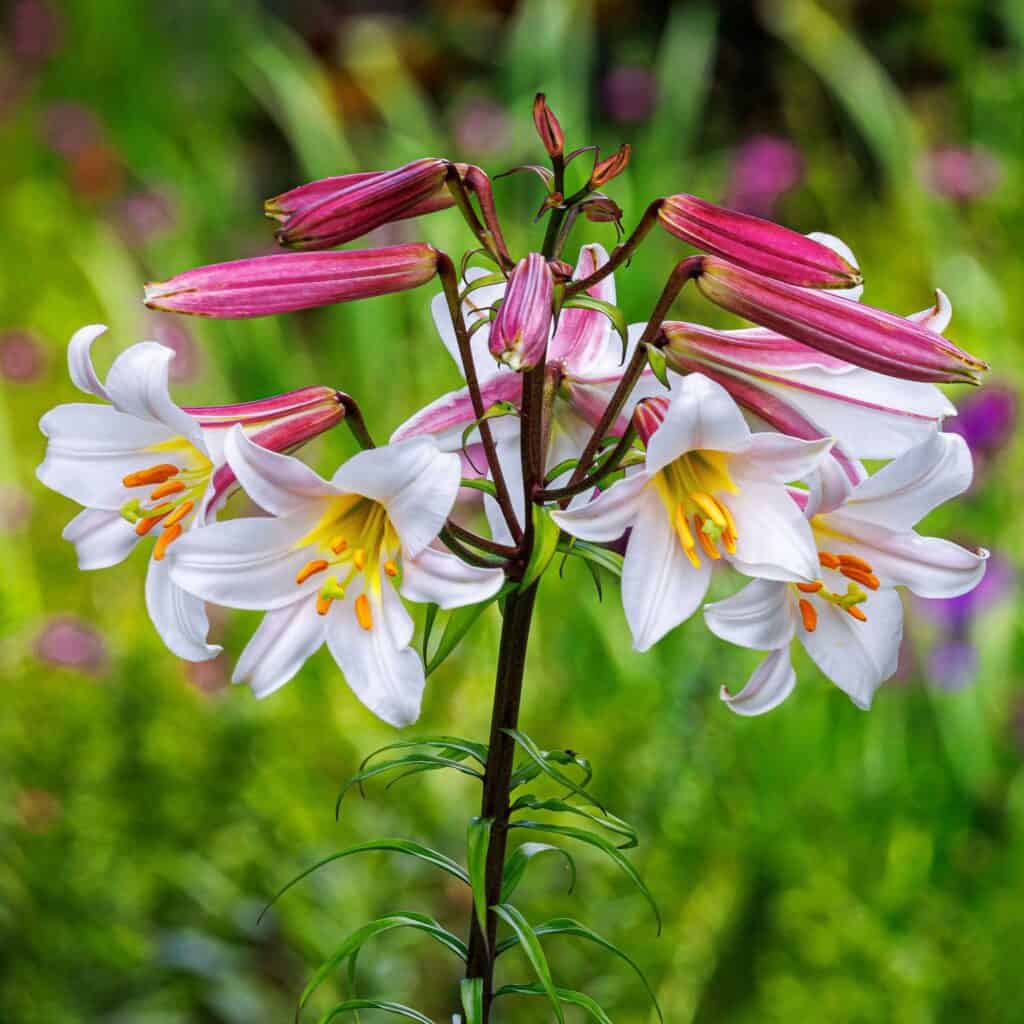
as a bridegroom rejoices over his bride, so will your God rejoice over you. Isaiah 62:5 NIV
I will be their shepherd and will let them graze on Israel’s mountains and in the valleys and fertile fields. They will be safe as they feed on grassy meadows and green hills. I promise to take care of them and keep them safe Ezekiel 34:13-15 CEB
Instead, rejoice and celebrate forever, because of what I am creating. Watch this! I am about to create Jerusalem to be a source of gladness, and her people will be a source of joy. Isaiah 65:18 EHV
Link to Jesus’ Parable of the Good Shepherd
I will feed them in good pasture, and they will graze on the mountains of Israel. They will rest on the good land where they graze, and they will feed on the best pastures in the mountains of Israel. I will take care of my sheep and lead them to rest, declares Adonay Yahweh. Ezekiel 34:14-15 NOG
And I will rejoice over them to do good to them, and I will plant them in this land in faithfulness with all my heart, and with all my inner self.” Jeremiah 32:41 LEB
Closing Prayer
O Lord, how happy I am that one landscape detail can usher me into a full dimension of your loving care! Lilies fill the garden with bright flower-delight and a scent to swoon over – and this is a reflection of You. Thank you, thank You so much for everything you have done to wash away my sins and rescue me to be a joyful part of Your life. I surrender to Your sweet rhythms and hope in You to guide me always. May I be Your sheep who listens to Your voice (John 10:27). Amen.
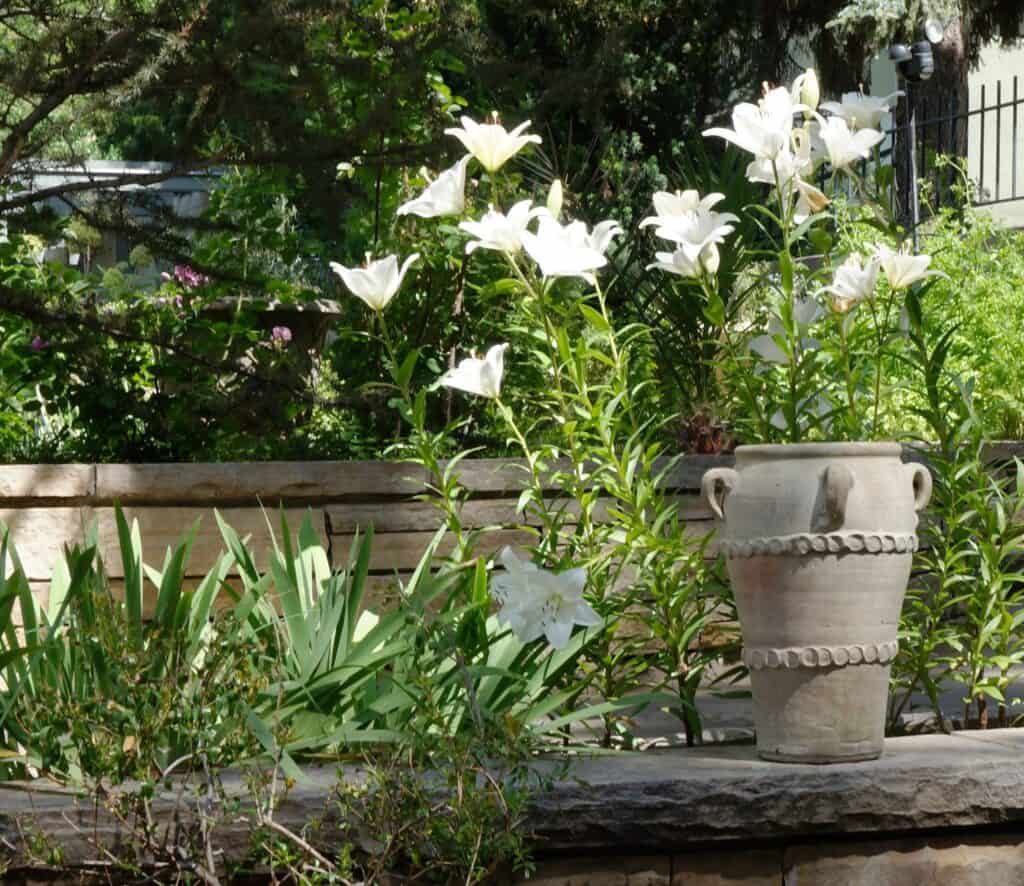
Come to me, and I will refresh your life, for I am your oasis. Simply join your life with mine. Learn my ways and you’ll discover that I’m gentle, humble, easy to please. You will find refreshment and rest in me. Matthew 11:28 TPT

The Bride’s Garden is a 7-week series for the Lenten Season, focusing our thoughts and meditations on God’s Words of garden matrimony. Especially, the Scriptures swooning with flowering, fruiting plants contained in Song of Songs. While God hints throughout the Bible of His Bridegroom-like devotion to His people, He goes all-out with lavish botanicals in King Solomon’s bridal songbook, describing scents and fruits and enthralling garden views, giving us things to have and to hold as we cultivate a deeper longing for Him.
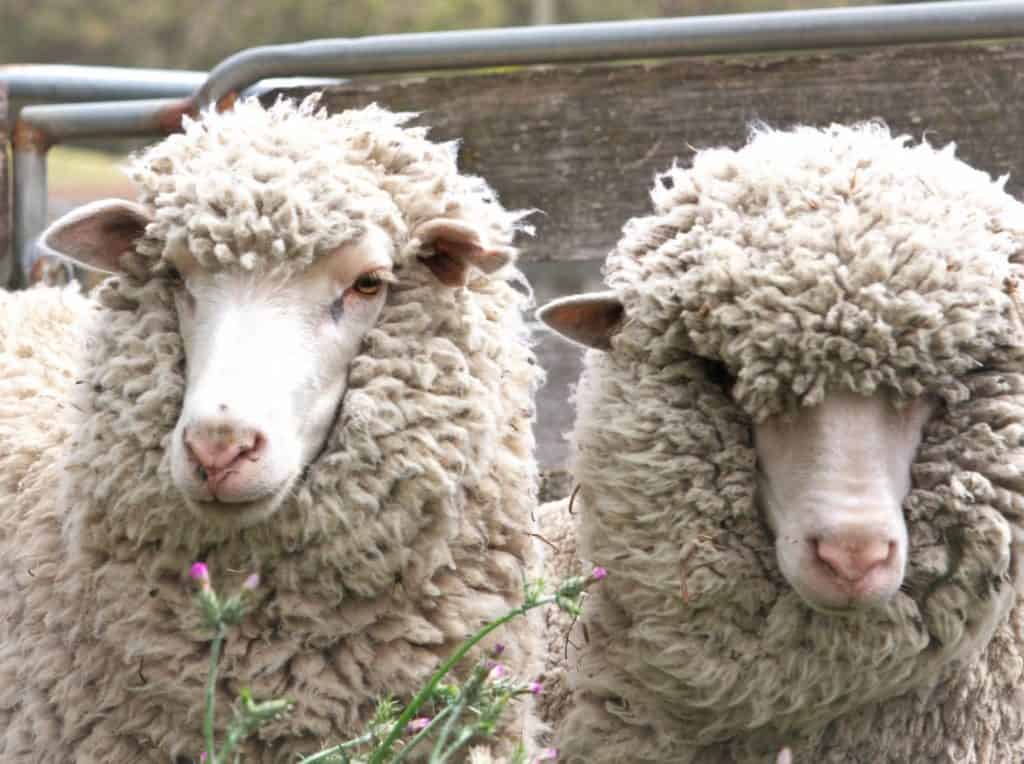
For more on the Shepherd-sheep metaphor in God’s Word, go to Father, Gardener & Good Shepherd in the Devotions Blog. Also, in April the Fort Worth Botanic Garden is bringing in a shepherd with his goats! Come to Goats in the Garden to see firsthand a shepherd with his flock.

While lilies are featured above, other Biblical botanists include hyacinth, narcissus, iris, or the sea daffodil as possible “susans,” so the plant palate for The Bride’s Garden flourishes with options! Read more with Harold N. and Alma L. Moldenke, Plants of the Bible (Waltham, Mass., Chronica Botanica Co., 1952), pages 114-18, 129; and Michael Zohary, Plants of the Bible (Cambridge: Cambridge University Press, 1982), pages 176-79.
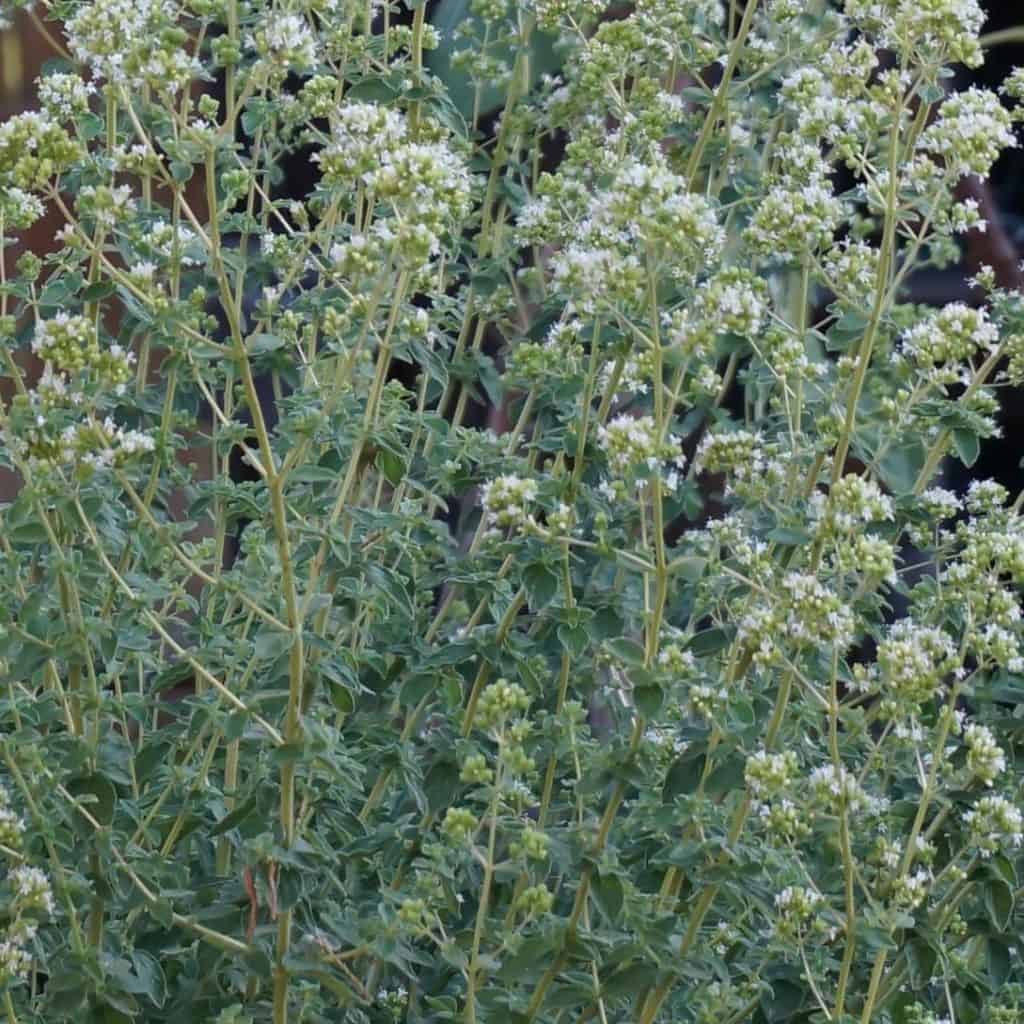
Naturally, Song of Songs has been a joy to dig into for years in the Devotions Blog at Garden in Delight, with a wide range of enticing plants to spice up a Biblical Garden. Refer to these articles for additional ideas for your Bride’s Garden: Verdant (maidenhair fern, Songs 1:16); A Father’s Tree, The Lollipop® Crabapple Story (Songs 2:3); Strengthen Me with Raisins, Refresh Me with Apples (Songs 2:5); Under your Own Vine and Fig Tree (Songs 2:13); Cultivating Calamus (Songs 4:14); God’s Focus in Saffron Crocus (Songs 4:14); Eaglewood in God’s Word (aloes, Songs 4:14); Pistachio Cookies or A Lenten Look at Trees: Almond (nut trees, Songs 6:11); Blue Wheat (Songs 7:2); Fresh Kale & Date Salad (Songs 7:8). Additionally, Song of Songs includes 5 of the 7 Species, read more at The 7 Species: A Garden-to-Table Guide
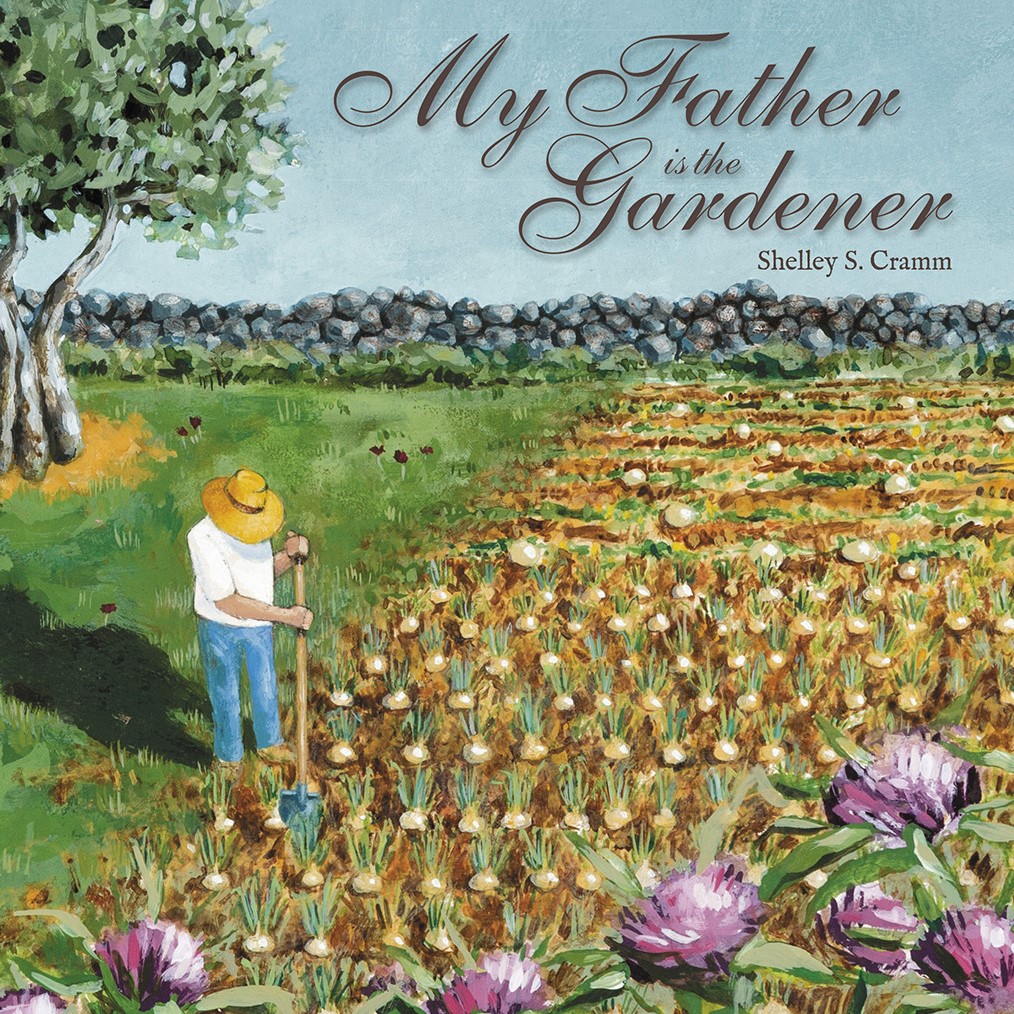
Do you love connecting God’s Word to your gardening work and the trees and plants around you? You will love my new book, My Father is the Gardener, Devotions in Botany and Gardening of the Bible, order at this link.
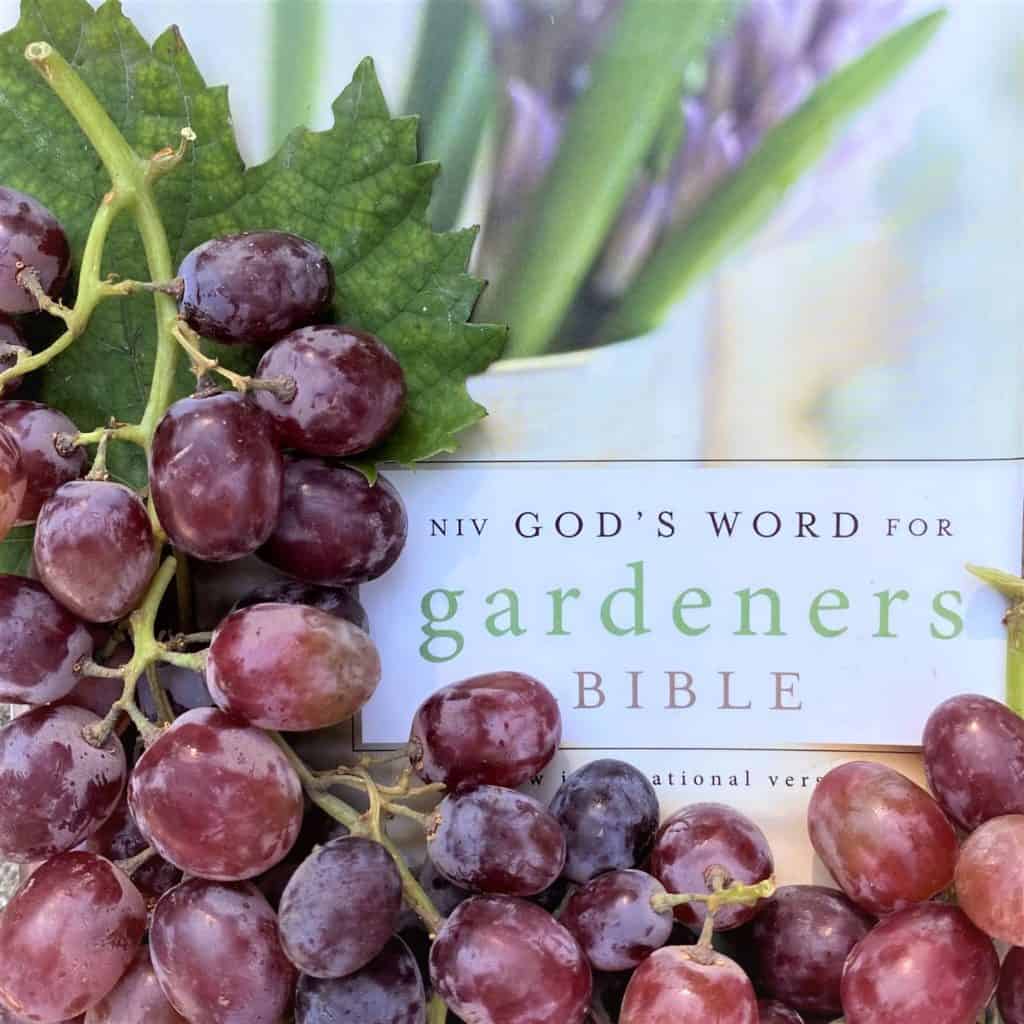
Read more devotions on the Song of Songs gardens in God’s Word for Gardeners Bible in the Garden Tour section on En Gedi, beginning on page a-16

Find each year’s Lent series from the Devotions Blog on a new webpage called Series of 7 Studies. They are 7-part, successive devotions focused on garden topics in God’s Word to dig into at any time
Photo Credits: Many thanks to the National Garden Bureau and their members for providing licensed Lily pictures for the Year of the Lily. Cover image ©Lily Madonna by Eden Brothers; color-bursting Forever Susan by Park Seed; Lily Bulbs Regale by Eden Brothers; Lilium candidum drawn by P.J. Redoute, Liliacées. Vol. 4 (Paris: Chez l’auteur, 1805). Plate 199. From plantillustrations.org; ©2023 Shelley S. Cramm lilies at the Scripture Garden at Denver Botanic Gardens
AMP notes Scripture quotations taken from the Amplified® Bible, Copyright © 2015 by The Lockman Foundation. Used by permission. www.Lockman.org
CEB notes Scripture quotations taken from the Common English Bible © 2011 Common English Bible, Nashville, Tennessee. All Rights Reserved. The CEB translation was funded by the Church Resources Development Corp, which allows for cooperation among denominational publishers in the development and distribution of Bibles, curriculum, and worship materials.
CEV notes Scripture quotations taken from the Contemporary English Version Copyright © 1991, 1992, 1995 by American Bible Society, Used by Permission.
DRA denotes the Douay–Rheims Bible is a translation of the Bible from the Latin Vulgate into English made by members of the Catholic seminary English College, Douai, France. It was first published in America in 1790 by Mathew Carey of Philadelphia. Several American editions followed in the 19th and early 20th centuries; prominent among them the Douay-Rheims 1899 American Edition Version. This edition of the text has been converted from the 1899 edition of the John Murphy Company, Baltimore, Maryland, and is in the Public Domain.
EHV notes Scripture quotations taken from The Holy Bible, Evangelical Heritage Version® , EHV®, © 2019 Wartburg Project, Inc. All rights reserved. Used by permission.
GNT denotes Scripture quotations from the Good News Translation® (Today’s English Version, Second Edition) Copyright © 1992 American Bible Society. All rights reserved.
ISV denotes Scripture quotations from The Holy Bible: International Standard Version. Release 2.0, Build 2015.02.09. Copyright © 1995-2014 by ISV Foundation. ALL RIGHTS RESERVED INTERNATIONALLY. Used by permission of Davidson Press, LLC.
LEB denotes Scripture quotations taken from the Lexham English Bible. Copyright 2012 Logos Bible Software. Lexham is a registered trademark of Logos Bible Software.
The Message denotes Scripture quotations taken from THE MESSAGE, copyright © 1993, 2002, 2018 by Eugene H. Peterson. Used by permission of NavPress. All rights reserved. Represented by Tyndale House Publishers, a Division of Tyndale House Ministries.
NCB denotes Scripture taken from the SAINT JOSEPH NEW CATHOLIC BIBLE® Copyright © 2019 by Catholic Book Publishing Corp. Used with permission. All rights reserved.
NET designates Scripture quoted by permission from the NET Bible® copyright ©1996, 2019 by Biblical Studies Press, L.L.C. http://netbible.com All rights reserved.
NIV denotes Scripture quotations taken from the Holy Bible, New International Version®, NIV®. Copyright © 1973, 1978, 1984, 2011 by Biblica, Inc.® Used by permission of Zondervan. All rights reserved worldwide. www.zondervan.com The “NIV” and “New International Version” are trademarks registered in the United States Patent and Trademark Office by Biblica, Inc.®
NLV denotes Scripture quotations taken from the New Life Version, copyright © 1969 and 2003. Used by permission of Barbour Publishing, Inc., Uhrichsville, Ohio 44683. All rights reserved.
NOG denotes Scripture quotations taken from The Names of God Bible copyright © 2011 by Baker Publishing Group, 6030 East Fulton Road, Ada, MI 49301. All Rights Reserved.
TLB denotes Scripture quotations taken from The Living Bible copyright © 1971 by Tyndale House Foundation. Used by permission of Tyndale House Publishers Inc., Carol Stream, Illinois 60188. All rights reserved. The Living Bible, TLB, and the The Living Bible logo are registered trademarks of Tyndale House Publishers.
TPT denotes Scripture quotations taken from The Passion Translation®. Copyright © 2017, 2018, 2020 by Passion & Fire Ministries, Inc. Used by permission. All rights reserved. ThePassionTranslation.com

